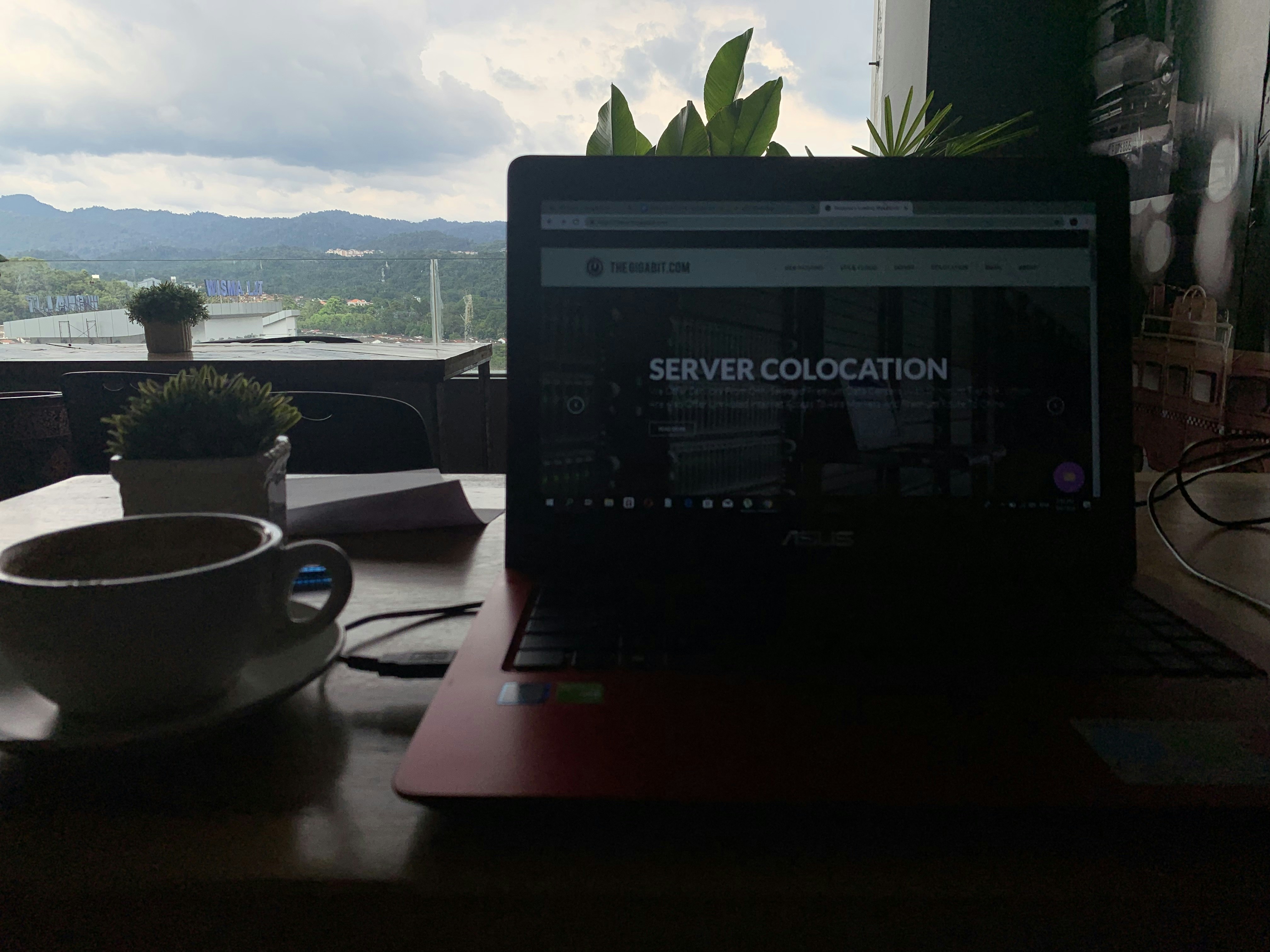Cloud providers are step by step changing on-premises infrastructure, and enterprises who migrate to the cloud can leverage its efficiency advantages and plan for the long run.
Cloud spending has elevated in 2023, and the pattern reveals no signal of slowing down. In line with Flexera’s State of the Cloud report, the highest cloud problem amongst 82% of surveyed enterprises is managing cloud spending.
To get probably the most worth out of your funding, you’ll have to plan your enterprise cloud migration correctly, execute it successfully, and proceed to watch and optimize your new cloud infrastructure.
Whether or not you propose to carry out your migration in-house or name in a crew of consultants, right here’s what it’s essential to know:
Key factors
- Extra enterprises are transferring to the cloud.
- Correctly planning your cloud migration is important to get probably the most worth out of your funding.
- Kinds of cloud infrastructure embody public, personal, multi-cloud, and hybrid.
- Advantages of cloud migration embody sooner provisioning, scalability, improved efficiency, useful resource consolidation, minimizing downtime, improved safety and compliance, and future-proofing your IT setup.
- Challenges concerned with migrating to the cloud embody such considerations as restricted expertise, value, and the downtime it entails.
- Seven methods for cloud migration are rehost, relocate, replatform, refactor, repurchase, retire, and retain.
- The first levels to migrating to the cloud are planning, execution, and post-migration monitoring.
- Shifting to the cloud is turning into extra paramount. Liquid Net may also help. Most often, we are able to carry out the migration for you at no cost.
What’s cloud migration for enterprises?
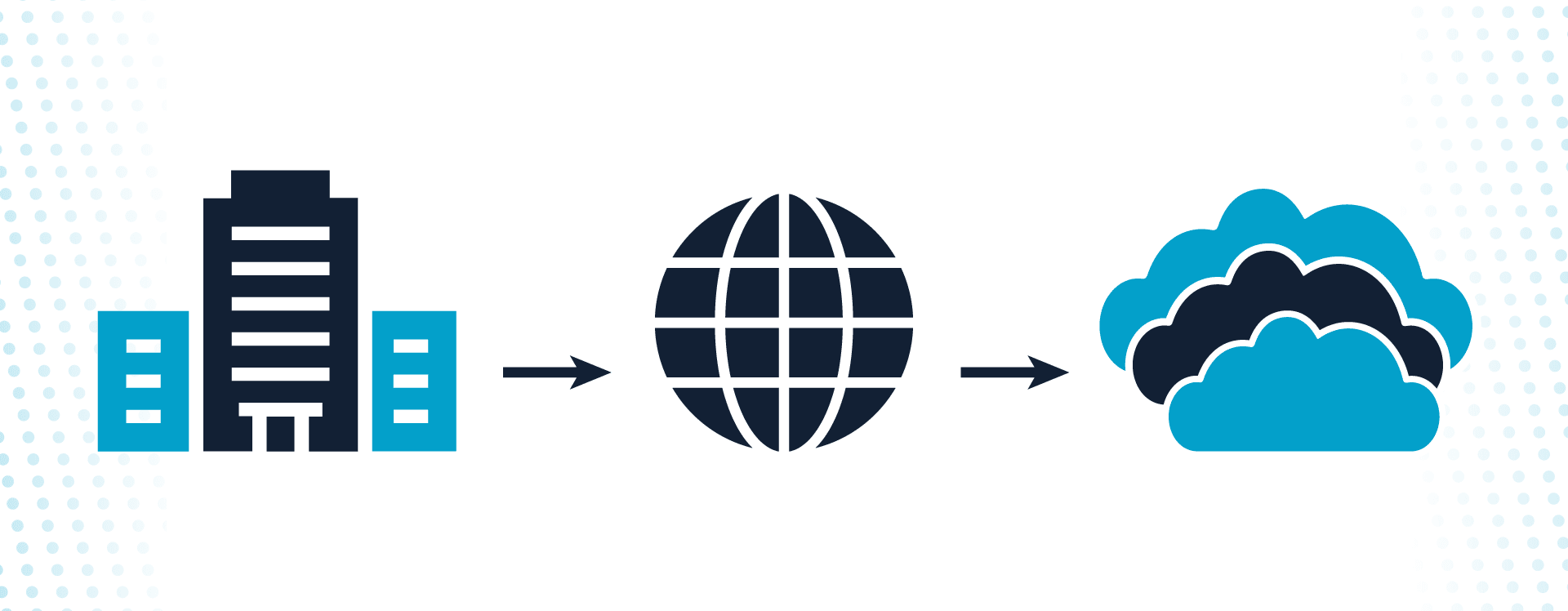
Cloud migration strikes your enterprise’s knowledge from one storage answer to a cloud setting. Your authentic storage answer might be an on-premises knowledge middle or a conventional website hosting service, similar to shared, VPS, or devoted internet hosting. It’s also possible to migrate your IT assets from one cloud service to a different.
The cloud infrastructure you progress to might be personal, public, multi-cloud, or hybrid. Right here’s a breakdown of those enterprise cloud migration choices:
Non-public cloud
Non-public cloud migration is a superb selection for companies that wish to leverage the cloud’s capabilities and assets devoted to their enterprise. Prospects who use personal cloud embody Software program-as-a-Service (SaaS) firms, busy eCommerce shops, and enterprises with mission-critical workloads.
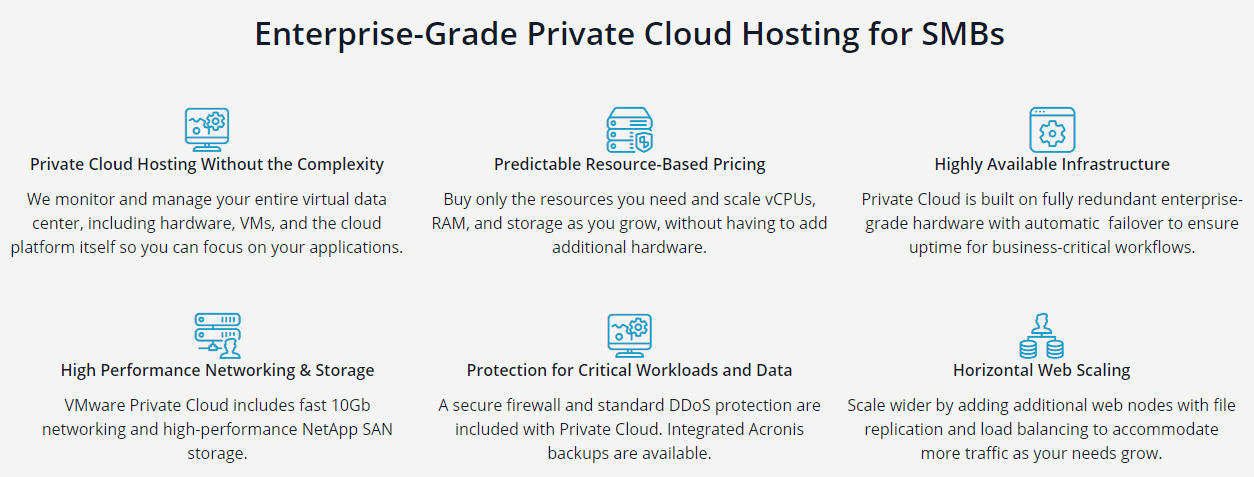
Liquid Net presents personal cloud providers powered by VMware. This implies you possibly can achieve enterprise-grade cloud infrastructure and rely on top-tier help from the Most Useful People in Internet hosting.
Public cloud
Within the public cloud, server assets are shared with exterior events, which makes it cheaper than a non-public cloud.
That stated, the sharing of cloud assets typically raises safety considerations. For instance, 2023 noticed a much-publicized breach of Microsoft Cloud. A personal cloud is a greater answer for enterprises trying to set up and retain buyer belief.
Multi-cloud
In a multi-cloud setup, an enterprise makes use of cloud providers from two or extra suppliers. This might contain a public cloud, a non-public cloud, or a mix of each. Any such cloud adoption can enable firms to make the perfect use of their assets to deal with totally different workloads.
Hybrid cloud
If an enterprise has a hybrid cloud setup, it’s utilizing each private and non-private cloud architectures. This implies delicate knowledge (e.g., buyer data) could be saved within the costlier personal cloud, whereas nonsensitive knowledge and IT infrastructure can reside in a public cloud setting.
Advantages of an enterprise cloud migration
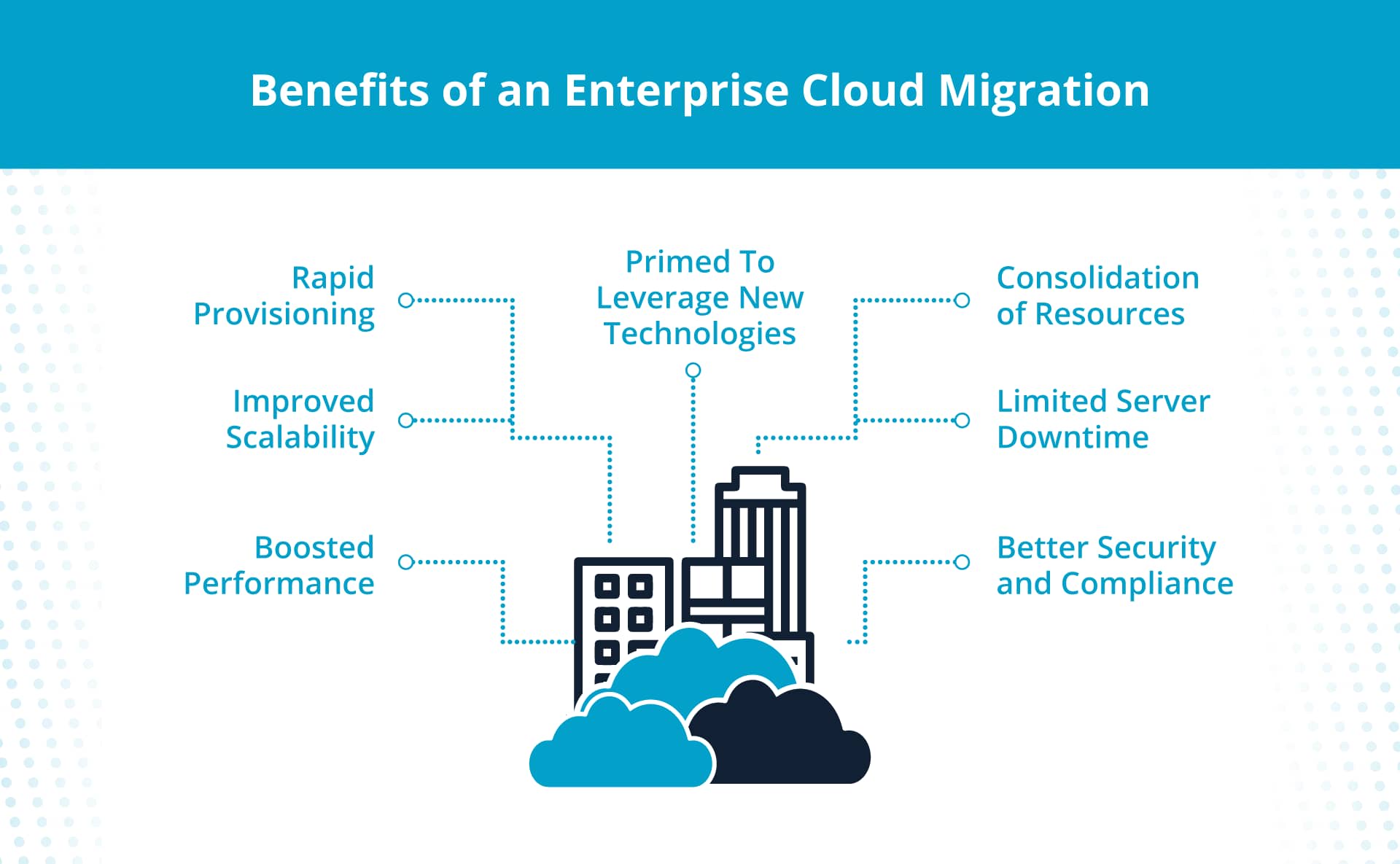
A cloud-first digital transformation of your IT assets can have many advantages, similar to enabling you to:
- Get quick provisioning.
- Guarantee scalability.
- Enhance efficiency.
- Consolidate assets.
- Restrict future downtime.
- Enhance safety and compliance.
- Future-proof your IT setup.
Get quick provisioning
For enterprises, conventional IT provisioning requires substantial time and monetary funding. However cloud provisioning is far sooner, whether or not you need Infrastructure-as-a-Service (IaaS), SaaS, or Platform-as-a-Service (PaaS).
Guarantee scalability
The cloud is extra scalable than conventional types of internet hosting, similar to shared and devoted plans. With Liquid Net’s VMware Non-public Cloud, for instance, you possibly can simply add hosts to your server cluster to take care of sudden, seasonal, or cyclical spikes in demand.
And as your online business grows, you’ll profit from having extra server assets on demand to fulfill your altering wants.
Enhance efficiency
A transfer to the cloud can convey substantial IT efficiency advantages to organizations. For instance, you possibly can create a cloud server cluster so that every host handles an acceptable workload.
This ensures that you simply don’t overutilize a single host, which might have an effect on the efficiency of your whole digital knowledge middle.
Some cloud service suppliers even have performance-boosting options. For instance, VMware’s distributed useful resource scheduler enables you to leverage automation for efficient load balancing.
Consolidate assets
Useful resource consolidation is one other draw of an enterprise cloud migration. You’ll be capable of minimize down on {hardware} provisioning and deal with your cloud setup from a centralized dashboard, serving to you cut back prices and simplify IT administration.
Restrict future downtime
Some cloud platforms have options that may reduce on or remove downtime. When you migrate your on-premises assets to a VMware cluster, for instance, you possibly can leverage options similar to excessive availability (HA) and fault tolerance (FT).
HA screens hosts and digital machines (VMs) to determine failures early. It additionally gives failover safety and routinely restarts machines after an outage.
[embedded content]
FT maintains a secondary VM that mirrors your major VM. In case your major VM fails, the secondary VM takes over, stopping knowledge loss and downtime.
Enhance safety and compliance
When you select a non-public cloud supplier when transferring your enterprise’s purposes to the cloud, you possibly can profit from enhanced knowledge safety by way of useful resource isolation. That is particularly vital for big enterprises that deal with delicate buyer knowledge, like bank card and healthcare data.
With Liquid Net, you will get HIPAA-compliant cloud internet hosting to offer your clients peace of thoughts and guarantee your online business follows related rules, just like the Well being Insurance coverage Portability and Accountability Act. Moreover, a firewall and distributed denial-of-service (DDoS) safety are included with personal cloud plans.
Future-proof your IT setup
When you host your knowledge and purposes on-site, your bodily servers and related software program might ultimately go out of date, undergo a efficiency degradation, or unexpectedly fail.
However, big-name cloud service suppliers are continually growing new applied sciences to assist with IT modernization.
Obstacles to a profitable cloud migration for enterprises
Your organization would require enough cloud experience and monetary assets for a profitable enterprise cloud migration. Furthermore, you’ll want to decide on an acceptable migration timeframe for minimal disruptions.
Right here’s a breakdown of those limitations and what they imply to your firm:
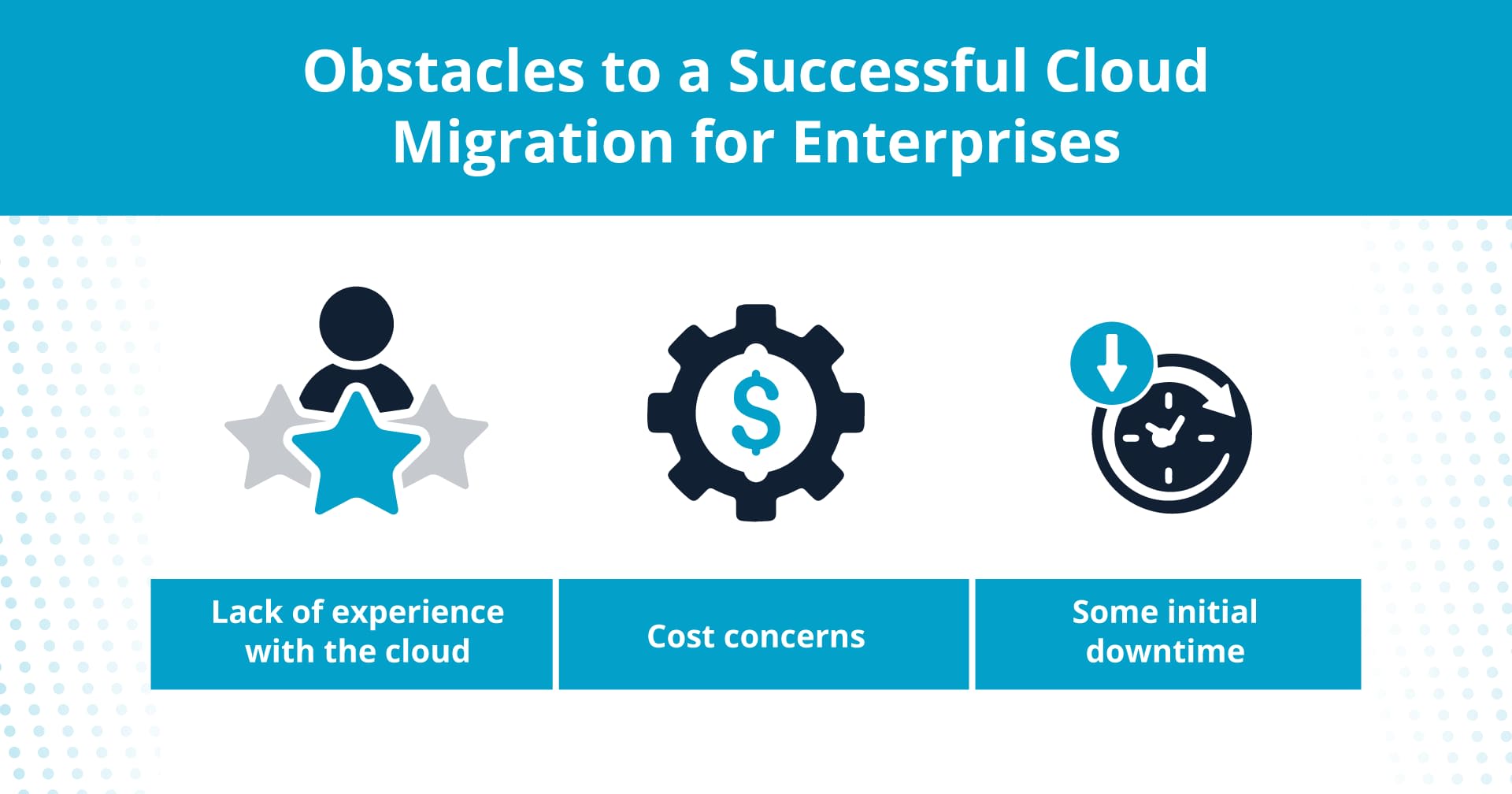
Lack of expertise with the cloud
In case your IT crew isn’t acquainted with cloud internet hosting, they might be unable to deal with your migration successfully with out correct coaching. Moreover, they received’t be primed to maximise the advantages of a cloud setup. This might result in you lacking out on helpful cloud functionalities, like catastrophe restoration.
On this case, contemplate a totally managed cloud answer from a third-party vendor, like Liquid Net.
Cloud value considerations
Migration and setup prices may appear excessive initially. Nevertheless, you possibly can see value financial savings over time. For instance, you possibly can substitute on-premises legacy programs with enterprise-grade cloud servers that supply excessive efficiency and effectivity. What’s extra, the cloud can considerably cut back your {hardware} prices.
Preliminary downtime
Though you possibly can anticipate some downtime, with correct planning, your migration crew may also help you defend essential assets to make sure enterprise continuity.
What’s an enterprise cloud migration technique?
That is an enterprise’s strategy to transferring all (or some) of its workloads and knowledge to the cloud. The seven forms of cloud migration methods are generally known as the “7 Rs.” Gartner proposed 5 methods, and Amazon Net Providers (AWS) added two.
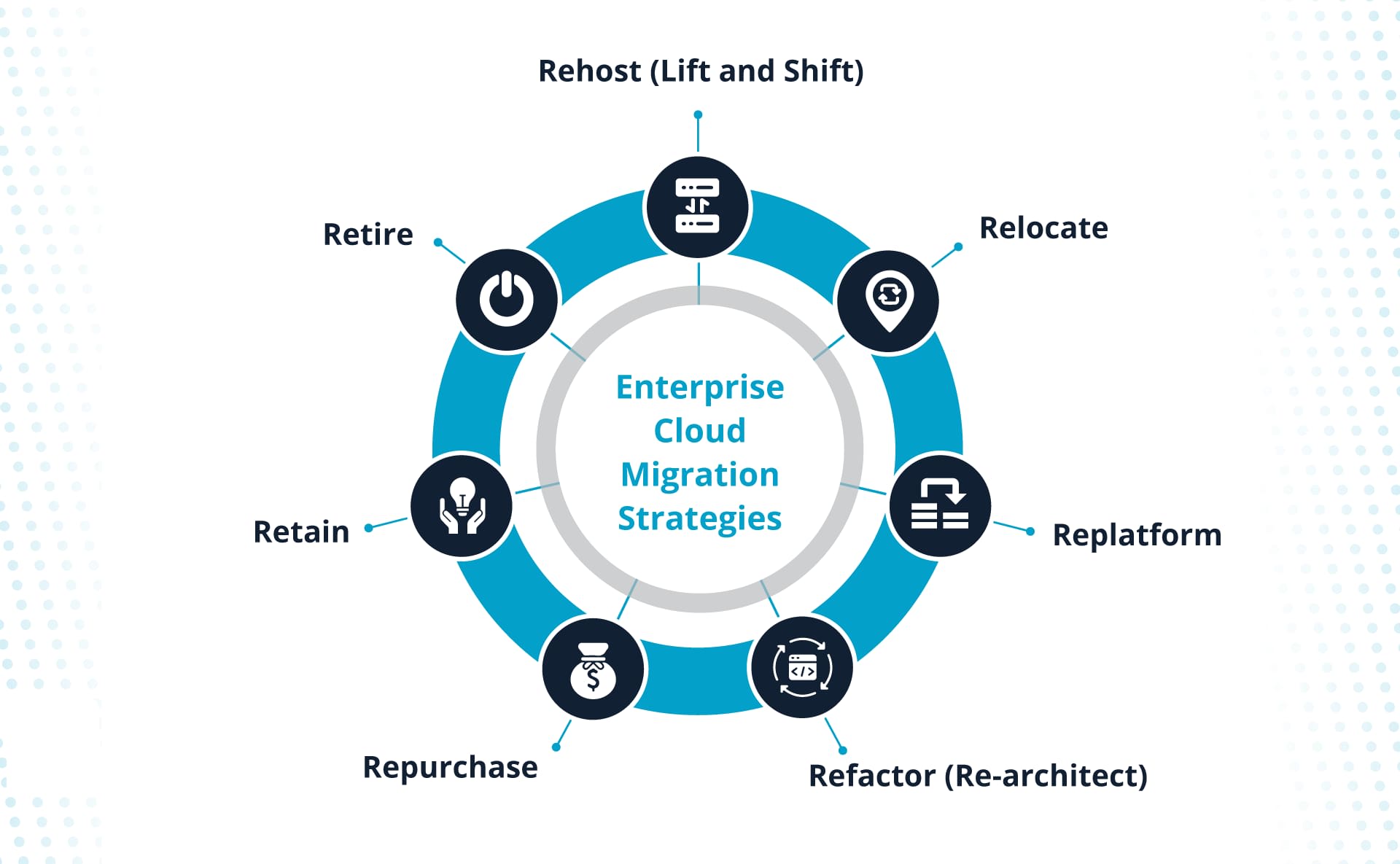
- Rehost (Elevate and Shift): This can be a easy transfer to a cloud platform the place you switch workloads as they’re with out modification. As a result of it’s simpler than different methods, it might be extra appropriate for enterprises with out cloud experience.
- Relocate: That is often known as “hypervisor-level carry and shift.” In essence, you progress infrastructure hosted on an on-premises platform, like VMware, to a cloud-based model of the platform.
- Replatform: Also called “carry and reshape,” a replatform entails some changes to benefit from cloud capabilities.
- Refactor (Re-architect): This can be a complicated strategy that entails an overhaul of your storage structure to optimize it for the cloud.
- Repurchase: Additionally known as “drop and store,” this implies changing an outdated system with a newly bought cloud-native system.
- Retire: This entails eliminating digital assets you don’t require anymore.
- Retain: On this possibility, your online business retains some knowledge or purposes in its authentic infrastructure and strikes different assets to a brand new cloud computing platform.
Learn how to plan and carry out an enterprise cloud migration
By following cloud migration finest practices, you possibly can cut back migration prices and be certain that no IT assets get misplaced as you progress to the cloud. For any enterprise cloud migration, the three key duties are planning, executing, and monitoring.
Migration planning
When you plan your migration rigorously, you possibly can guarantee minimal downtime and no lack of essential knowledge. Comply with these steps to make sure your migration goes as easily as attainable.
- Contemplate your online business targets for the migration: It’s possible you’ll wish to consolidate your assets, get able to scale as required, or obtain long-term value financial savings. Noting these enterprise targets may also help you establish whether or not your cloud migration is profitable.
- Guarantee you could have the required assets in place: A transfer to the cloud has a excessive preliminary outlay, so be sure to have an ample internet hosting funds put aside.
- Designate a migration specialist inside your IT crew: This particular person could have chief duty for planning and executing your migration.
- Resolve what you wish to migrate: Relying on your online business wants, you could wish to migrate a web site, apps, or a database.
- Take inventory: Do a radical headcount of your IT assets to make sure no very important knowledge is left behind. This may also help you determine what server area you’ll want instantly. However don’t fear an excessive amount of about leaving additional room to develop — after a cloud migration, you’ll be capable of scale with ease.
- Delete something you don’t want: An upcoming cloud migration is an effective alternative to do a spring cleansing of information that’s not required. Nevertheless, you’ll have to be additional cautious that you simply don’t eliminate important knowledge.
- Establish your utility dependencies: These are the IT elements that depend on one another to perform. It’s possible you’ll want to map these out to get a visible sense of them earlier than any migration takes place. When you skip this step, your migration is probably not as clean as anticipated.
- Resolve in your enterprise cloud migration technique: Select from the 7 Rs we mentioned above. The very best technique to your enterprise will rely in your present setup, useful resource availability, and future plans for modernization and enlargement. If you need cloud storage however can’t commit to a whole overhaul, a carry and shift migration may be your finest guess.
- Talk your technique with all stakeholders: Enterprises thrive on efficient communication, so don’t maintain your migration plan below wraps till the final minute. Your workers members may also help you determine pitfalls and alternatives for enchancment.
- Contemplate the dangers concerned and make contingency plans: Potential dangers contain safety points, incorrect knowledge switch, and lack of compatibility with the brand new cloud setting.
- Select your cloud mannequin: If a public cloud doesn’t go well with your online business wants, take a look on the personal and hybrid cloud choices obtainable to you. Then, all it’s essential to do is discover a internet hosting plan that matches your funds. Liquid Net presents Cloud Steel, Cloud VPS, Cloud Devoted, and VMware Non-public Cloud.
- Select your cloud service supplier: When you’re planning emigrate mission-critical IT assets, you need to select a supplier with a stellar status by way of server efficiency and help. Liquid Net has helped companies of all sizes transfer to the cloud with confidence.
- Verify a migration date: When you’re an ecommerce retailer or in one other business that sees seasonal fluctuations, choose a interval when enterprise is often sluggish. It will reduce any influence in your clients and enterprise operations.
Cloud migration course of
After you’ve established your all-important plans, prepare to your real-time enterprise cloud migration.
- Examine that each one pre-migration duties are full: This vital step will assist guarantee your painstaking preparation isn’t in useless.
- Assemble your migration crew: After you’ve briefed your crew on all migration duties, do some ultimate checks to make sure each member is aware of their space of duty. Additionally, give your crew the chance to ask questions.
- Carry out your migration: Use the migration instruments at your disposal to make sure your current purposes and knowledge are moved efficiently. (When transferring a big quantity of information, it is vital to remember that longer migration instances could happen as a result of components similar to server latency. Nevertheless, this could not considerably influence the general success of the migration. So, train endurance and resist the temptation to defer your migration.)
- Validate your migration: This step confirms the profitable switch of information and purposes out of your earlier internet hosting setting to your new cloud setting.
- Check your new cloud infrastructure: Run some assessments to make sure every little thing goes as deliberate. Key considerations are efficiency and safety.
- Doc your course of: This step lets you determine areas for enchancment and create a blueprint for any future migrations.
- Talk with stakeholders: Let all stakeholders (e.g., end-users) know that your migration is full. In your communications (e.g., electronic mail), invite all groups to convey any efficiency points to your consideration.
Put up-migration duties
As with all main change to an enterprise’s IT operations, it’s essential to intently monitor your new cloud configuration to determine any teething issues.
- Guarantee your new system is up and operating with out subject: Some cloud providers present monitoring software program to assist with this.
- Get to know your cloud platform: Take a while to navigate your new cloud platform and assess its performance. It’s possible you’ll have to share login credentials with crew members and designate entry ranges.
- Optimize your cloud setup: Use the options at your disposal, similar to clustering and cargo balancing, to enhance your tech stack’s efficiency. You might also wish to again up your knowledge within the cloud. Liquid Net gives Acronis Cyber Backups as an add-on.
The choice: White glove migration
Probably the most stress-free enterprise cloud migration possibility is undoubtedly a white glove migration. Not each cloud platform will present this premium service, and a few would possibly cost a excessive value for it. Nevertheless, Liquid Net presents free-of-charge migration within the majority of circumstances.
Our Migration Specialists take a cautious and systematic strategy to migrations that features the next steps:
- Migration varieties and updates: This step contains data gathering and server updates.
- Knowledge transfer: A Migration Specialist performs the preliminary sync.
- Validation: Our crew ensures every little thing capabilities because it ought to.
- Testing and remediation: We’ll hand over your web site and purposes to you for testing.
- Area identify system (DNS) replace: It will incur some downtime, however we take steps to reduce it.
Closing ideas
Whereas a cloud migration is a frightening prospect for any enterprise, it’s a savvy transfer for enterprises that wish to scale with ease and leverage cutting-edge expertise for optimum IT efficiency.
To make sure your migration goes to plan, let Liquid Net do the heavy lifting. Whether or not you need a cloud devoted server or a non-public VMware setup, we’re the right migration companion for your online business.


